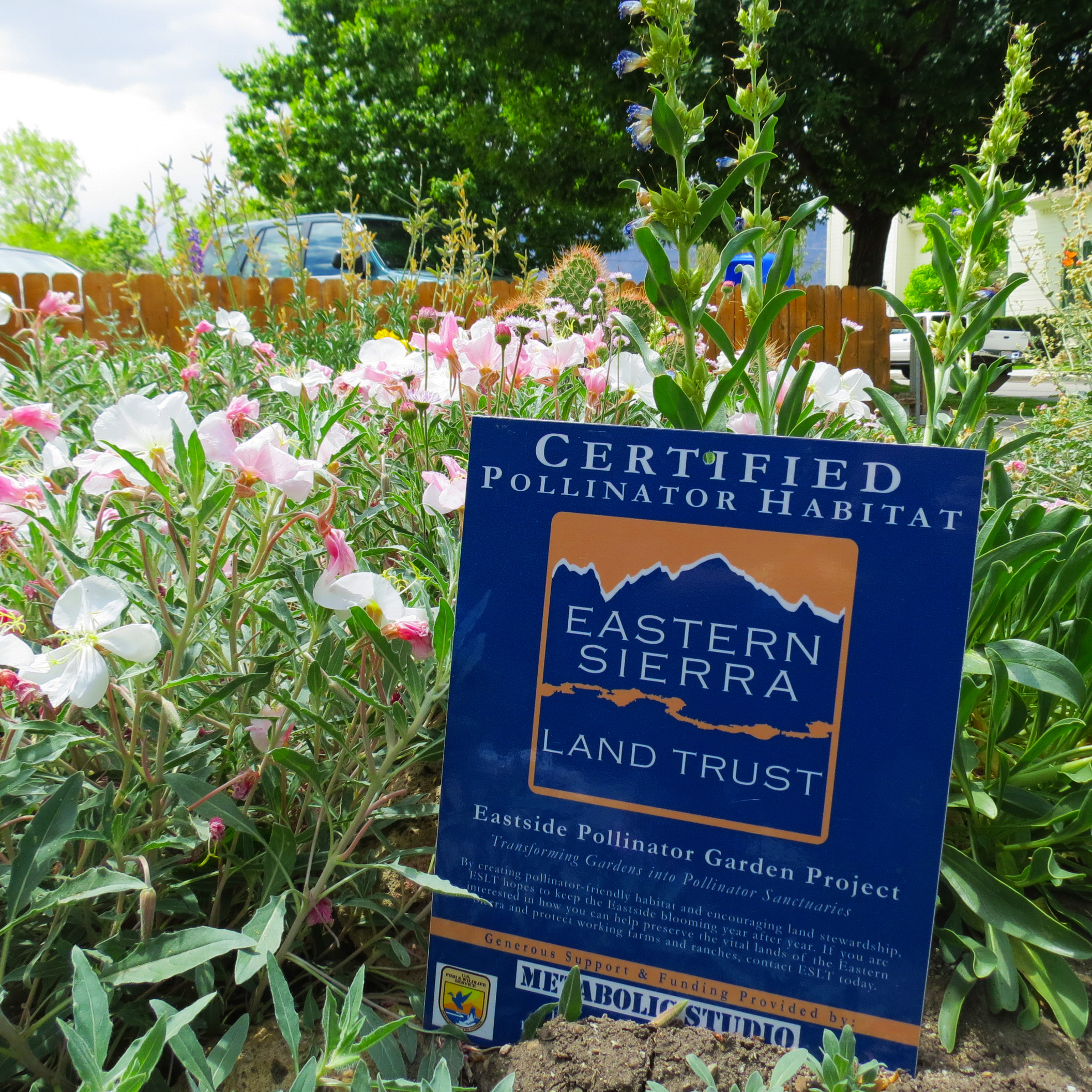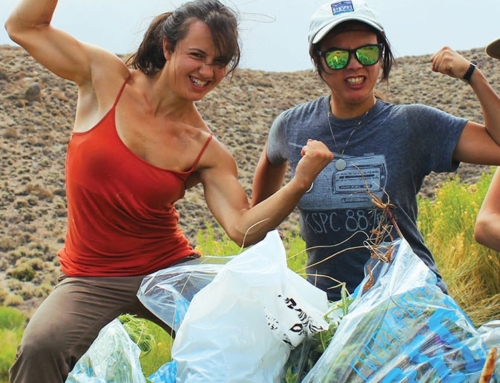Have you seen any monarchs in the Eastern Sierra lately?
 Fallis the best time of year to spot these rare and beautiful butterflies—so keep your eyes peeled before wintersets in!
Fallis the best time of year to spot these rare and beautiful butterflies—so keep your eyes peeled before wintersets in!
Monarchs are much more than a pretty sight in your garden. Along with bees, birds, and other pollinators,butterflies like the monarchare essential to a healthy environment. From wildflowers to working farms, monarchs and other pollinators keep the Eastern Sierra blooming, year after year. Without them, there would be no new growth.
But pollinator populations everywhere are in decline, impacted by pathogens, parasites, pesticides, and the loss of open spaces.Research shows that monarch populations have declined by 90% in the past 20 years. They are now at significant risk of extinction.
There’s good news, though: you can help bring monarchs back!

Bring monarchs to your backyard by creatinga pollinator garden this fall. Contact us today: we’re here to help!
Createa Pollinator Garden
One way you can help monarchs isbyplanting a pollinator garden, bloomingwith native plants.
Have you been thinking about creating a safe haven for butterflies and other pollinators in your backyard?Right now is the best time to break ground: according to Jaime Pawelek of the UC Berkeley Urban Bee Lab, “fall,with its cooler temperatures, shorter days, and imminent rainfall, is the best time to plant a [pollinator]garden in California.”
Want to learn moreabout ESLT’sEastside Pollinator Garden Project, which is helping locals in the Eastern Sierracreate pollinator gardens of their own? Contact Education Coordinator & AmeriCorps Member, Indigo Johnson, at , or give us a call at (760) 873-4554.
Plant Milkweed
Whether you already have a pollinator garden in place, are considering creatingone, or just want to spruce up your landscaping with a few additional plants, we highly recommend planting milkweed to anyone who wants to attract monarchs.
Monarchs rely on milkweed – in fact, their caterpillars will only feed on these plants. So planting milkweed is another critical step you can take to help monarchs.
Become a Citizen Scientist for a Day
Not a green thumb, or don’t have access to a garden plot? There’s still something that each and every one of us can do for monarchs: join the growing local citizen science effort, the Great Basin Monarch and Milkweed Project!It’s easy to do, and it will help researchers who study monarchs in our area. Simply sign up on their website and download the iNaturalist app to your phone.Whenever you see milkweed or monarchs, snap a photo and add your observation to theproject. And if you aren’t 100% sure on the ID, don’t worry- other members of iNaturalist will helpyou to identify the plant or caterpillar using your photos.
You can also assist researchers bymonitoring local milkweed patches for monarch breeding. To learn more about”adopting” a milkweed patch and searching the leaves weekly for eggs and caterpillars, contactRachel Williams,US Fish and Wildlife Service, .
Next spring, biologists and volunteers will be looking for monarch locations to capture andtag monarchs. These tags will allow researchers to learn more about where and how thesebutterflies are migrating. By participating in the Great Basin Monarch and Milkweed Project and helping monitor milkweed patches, you can help researchers learn more about what we all can do tokeep the monarch butterfly around for generations to come.
To learn more about monarchs, the Great Basin Monarch and Milkweed Project, and other steps you can take to help monarchs thrive, please emailRachel Williams .








